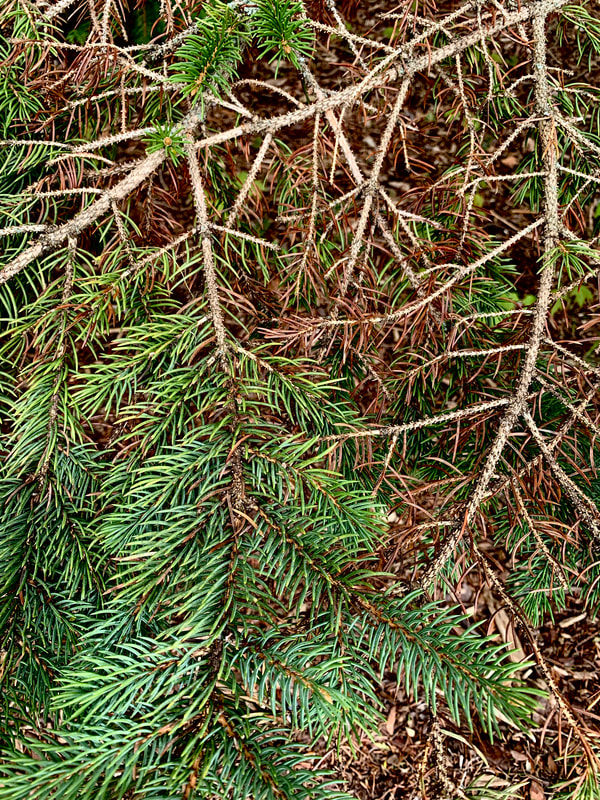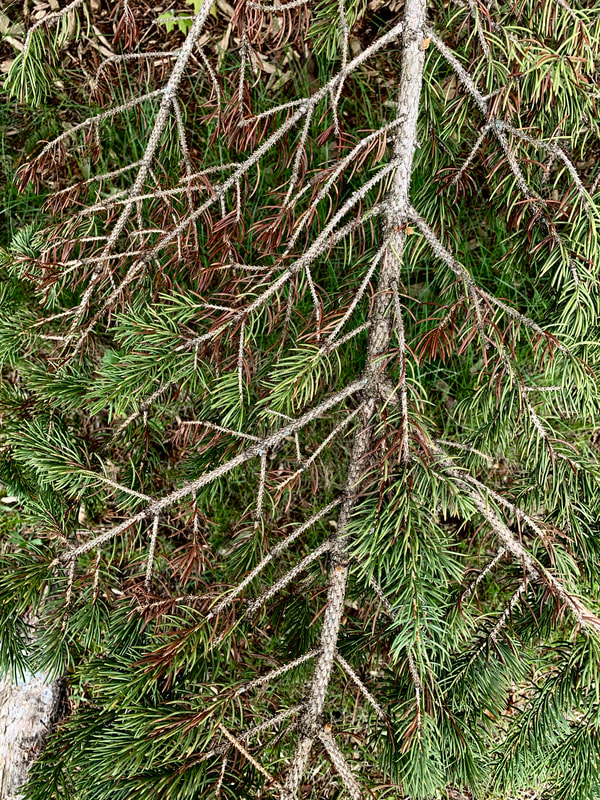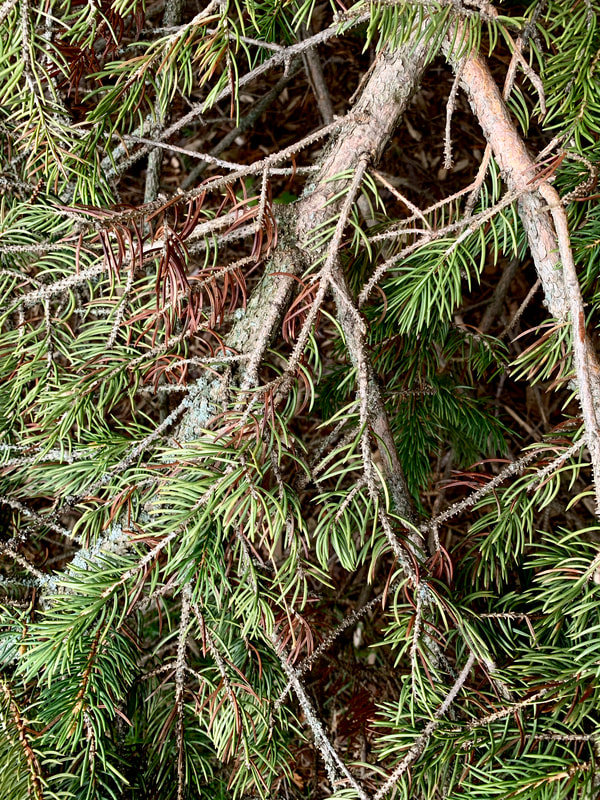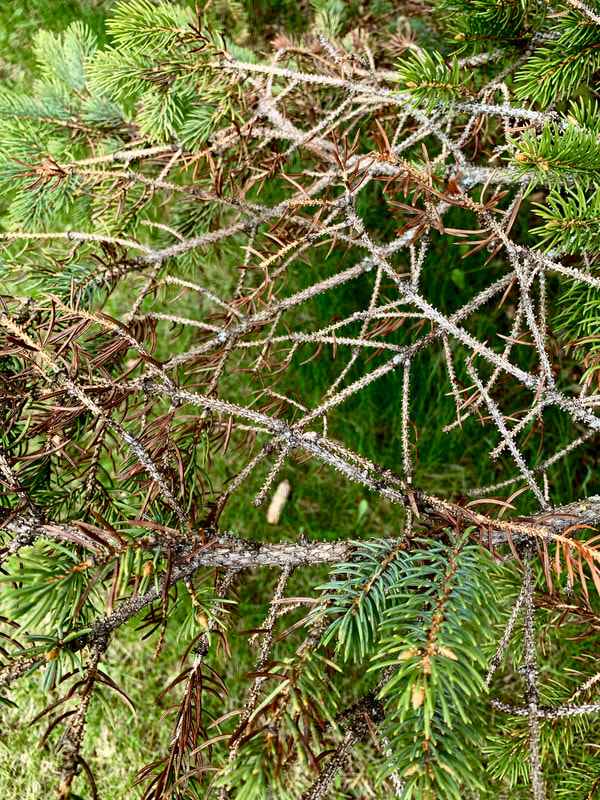|
Are the needled trees in your landscaping looking brown & sickly? There's a good chance it's due to one (or both) of the needle cast diseases sweeping though our area. Rhizosphaera Needle Cast & Stigmina Needle Cast diseases are devastating local needled tree populations. Both are caused by fungi and both can infect your trees at the same time. The best way to prevent tree loss and the spread of both diseases is to AVOID PLANTING ALL TREES SUSCEPTIBLE TO THESE INFECTIONS. Unfortunately, most nurseries & plant catalogs are still full of them! When a large blue spruce in our front yard began losing needles we started looking for answers online. What we found was all bad news. Most articles we read warn there is still much to be learned about Rhizosphaera & Stigmina Needle Cast Disease. Limited information is available online, even fewer options exist for successfully treating these diseases. Bottom line, we expect to lose a few of our trees and you probably will too. Here's what we know so far.
Our Best Advice,
Watch Your Trees Closely & Please Avoid Spreading Disease. DO NOT PURCHASE OR PLANT SUSCEPTIBLE SPECIES (Until more info & effective treatments become available)
0 Comments
Leave a Reply. |
Categories
All
Archives
July 2024
|
A Blog for Art, Garden & Nature Enthusiasts






 RSS Feed
RSS Feed

